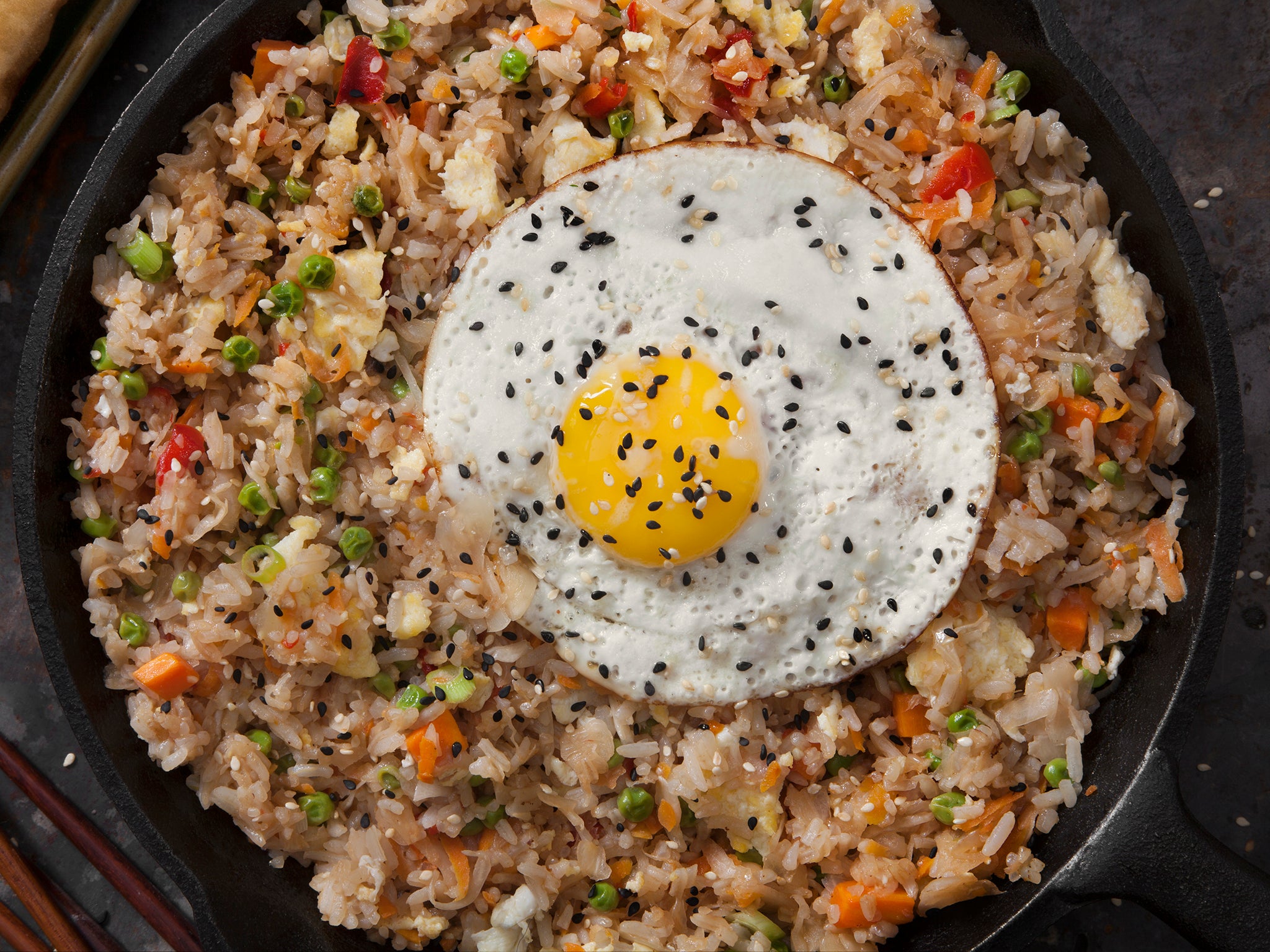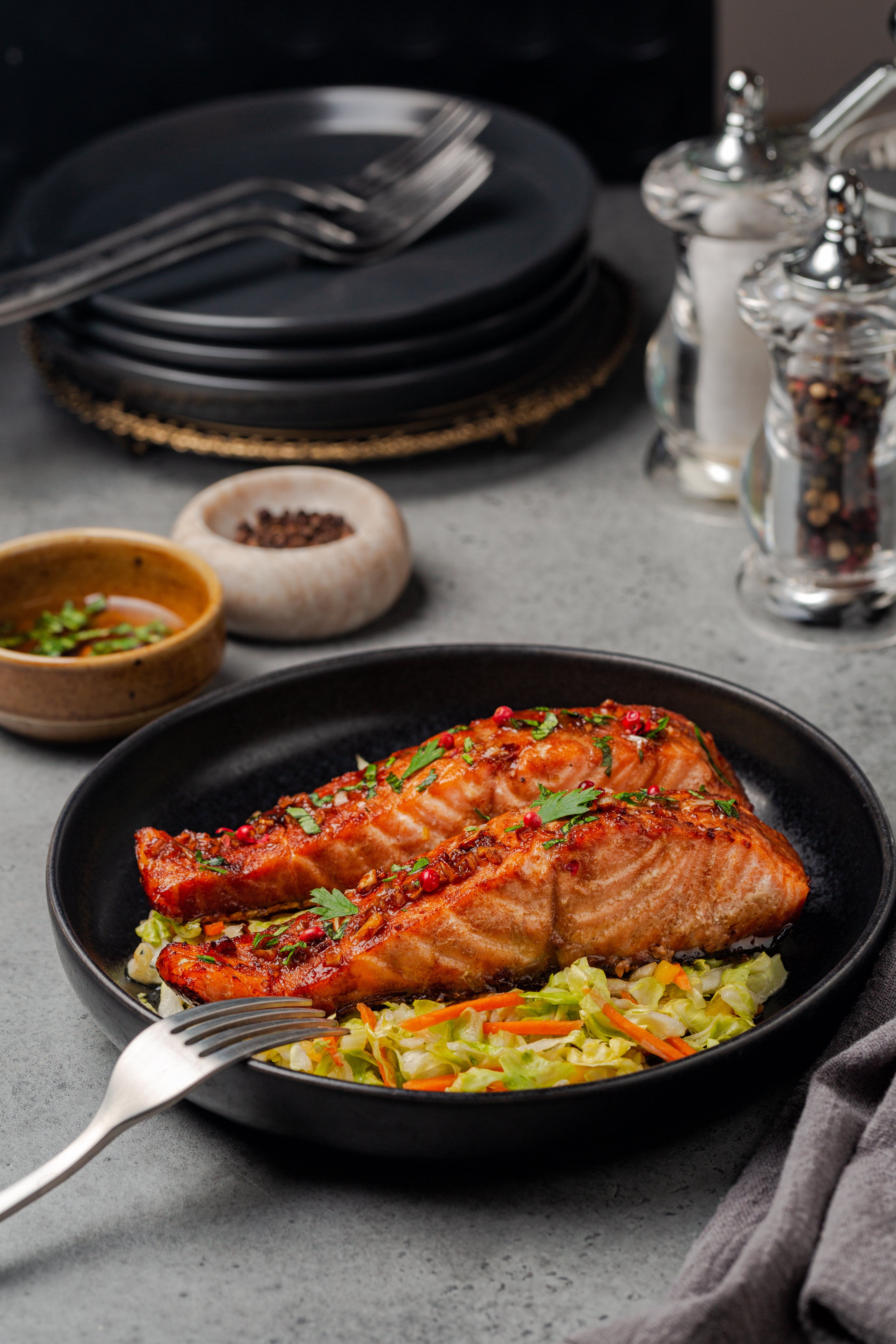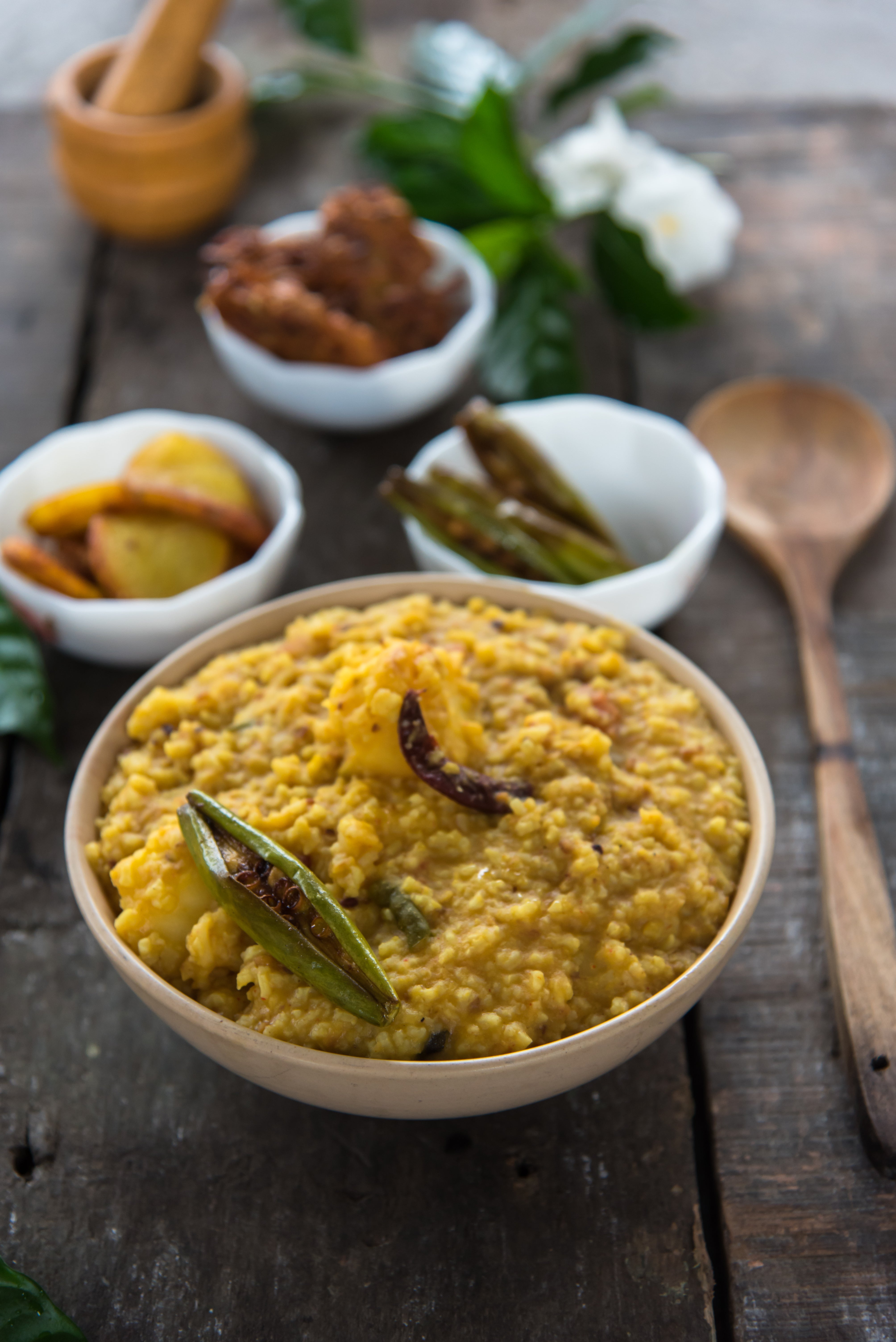Five rice-based dinners to make your week easy peasy
Rice provides ease and comfort, something steady, warming and reliable during unsettling days, says Krysten Chambrot

Your support helps us to tell the story
From reproductive rights to climate change to Big Tech, The Independent is on the ground when the story is developing. Whether it's investigating the financials of Elon Musk's pro-Trump PAC or producing our latest documentary, 'The A Word', which shines a light on the American women fighting for reproductive rights, we know how important it is to parse out the facts from the messaging.
At such a critical moment in US history, we need reporters on the ground. Your donation allows us to keep sending journalists to speak to both sides of the story.
The Independent is trusted by Americans across the entire political spectrum. And unlike many other quality news outlets, we choose not to lock Americans out of our reporting and analysis with paywalls. We believe quality journalism should be available to everyone, paid for by those who can afford it.
Your support makes all the difference.I just got a rice cooker, and I won’t shut up about it. In the evenings, I set it to steam rice as I finish work, and in the mornings, I fill it with steel-cut oats to cook as I get ready. I’ll add frozen berries just before I take my dog, Rudy, around the block, leaving them to warm gently in the residual heat. And, sometimes, I eat straight out of it (I know). What it provides is ease and comfort, something steady, warming and reliable during unsettling days.
Most of the recipes below call for already cooked rice (stored safely, of course), or to prepare the rice as part of the dish.
Traybake fried rice with vegan ‘XO’ sauce
While making fried rice the traditional way isn’t hard, this traybake version is an excellent alternative method: it uses the oven for the heavy lifting and produces the perfect amount of crisping. Fried rice is the ultimate adaptable dish, and here, frozen mixed vegetables – that bag of sweetcorn, carrots, peas and beans that home cooks should always keep in the freezer – create a colourful canvas for an XO-inspired vegan mushroom sauce that infuses the dish with umami. The sauce is a wonderful condiment in itself, so make a double batch to keep in the fridge for slathering over noodles or roasted vegetables. You could use mushrooms other than cremini for the sauce; fresh or dried shiitake work incredibly well. Add more eggs if you wish, too.
By: Hetty McKinnon
Serves: 4
Total time: 30 minutes
Ingredients:
6 heaping cups cold leftover rice (white or brown)
1 tsp salt, plus more to taste
3 tbsp soy sauce
2 tbsp sesame oil
1 onion, finely diced
120ml neutral oil, such as grapeseed or canola, plus more for drizzling
170g cremini mushrooms, finely chopped
2 garlic cloves, peeled and finely chopped
1 (2.5cm) piece ginger, finely chopped
1 tbsp dark soy sauce
¾ to 1 tsp red-pepper flakes, to taste
1 (450g) bag frozen mixed vegetables (do not thaw)
4 to 6 eggs
2 spring onions, thinly sliced
Method:
1. Place a baking tray on the middle oven rack and heat to 230C.
2. In a large bowl, combine the rice with salt, 2 tablespoons soy sauce, sesame oil and half of the diced onion. Toss to combine well. Remove the sheet pan from the oven, and spread the rice out evenly. Bake for 15 minutes.
3. Meanwhile, make the sauce: in a medium saucepan on medium-high heat, add 1 to 2 tablespoons neutral oil and the remaining diced onion. Cook for 1 to 2 minutes until the onions start to soften, then reduce heat to medium and cook for 2 minutes more until translucent. Add the remaining 6 to 7 tablespoons neutral oil, along with the mushrooms, garlic, ginger, remaining 1 tablespoon soy sauce, dark soy sauce and red-pepper flakes. Reduce heat to medium-low and cook for 10 to 12 minutes, until the mushrooms are completely soft. If the oil bubbles too much, reduce the heat to low.
4. After 15 minutes, remove the tray from the oven, add the frozen mixed vegetables and toss with the rice to evenly distribute. Make 4 to 6 divots in the rice (depending on how many eggs you are using), drizzle a tiny bit of neutral oil into each divot to prevent sticking, and break an egg into each. Return to the oven for 6 to 10 minutes until the whites are set but the yolks are still runny.
5. To serve, spoon some of the sauce over the rice and top with spring onions. If the rice needs more seasoning, add more sauce or season with salt.
Chicken and rice with spring onion-ginger sauce
Chicken and rice is a favourite combination around the world. This version, an Asian-inspired one-pot meal, coaxes a lot of flavour out of a limited ingredient list. Rinsing rice until the water runs clear helps remove extra starch on the outside of the grains and will make rice less gummy when cooked. The most essential step when cooking rice on the stovetop is to resist the urge to peek under the lid; the telltale sign that the rice is done is when the steam rising from under the lid has subsided (in the early stages of cooking rice, there may be visible steam escaping the saucepan, but as the moisture is absorbed by the rice, you may notice less steam).
By: Sue Li
Serves: 4
Total time: 45 minutes
Ingredients:
340g sushi rice (or other short-grain white rice)
480ml chicken broth
1 (7.5cm) piece fresh ginger, peeled and grated (about 3 tbsp)
4 boneless, skinless chicken breasts (about 900g)
Salt and pepper
60ml vegetable oil
6 spring onions, trimmed and thinly sliced
2 tbsp unseasoned rice vinegar
1 jalapeño, halved, seeded, then thinly sliced
2 tsp toasted white sesame seeds
1 tsp sesame oil
½ tsp sugar
Method:
1. Place rice in a fine-mesh sieve and rinse under cold water, shaking gently, until the water runs clear. In a medium saucepan, combine rice, broth and 1 tablespoon grated ginger. Season chicken all over with salt and pepper and place on top of rice mixture. Cover and bring mixture to a boil over high. Once mixture comes to a boil, reduce heat to medium-low and simmer until rice is plump, broth is absorbed and chicken is cooked through, 20 to 22 minutes. Turn off heat and let rest, covered, 10 minutes.
2. Meanwhile, in a medium bowl, combine the vegetable oil, spring onions, vinegar, jalapeño, sesame seeds, sesame oil, sugar and remaining ginger; season with salt and pepper.
3. Remove chicken from saucepan and slice 1.5cm thick crosswise. Fluff rice with a fork and divide among bowls. Top with chicken and scallion-ginger sauce.
Traybake jerk salmon

Broiling is one of the quickest ways to cook salmon, and retain its moisture. It heats the outside while keeping the inside tender. When making this jerk salmon, your house may smell like a charcoal grill in the Caribbean. Don’t worry if the fish darkens considerably as it cooks; that’s when you know it’s almost done. Finish it off with a mango slaw or classic carrot salad to make your dinner look as vivid as it tastes.
By: Millie Peartree
Serves: 4
Total time: 20 minutes
Ingredients:
Nonstick cooking spray (optional)
4 (170g) skin-on salmon fillets, about 2.5-4cm thick
2 tbsp olive oil
2 tbsp jerk seasoning paste (hot or mild)
1 tsp sweet or hot paprika
Salt (optional)
Chopped fresh parsley, for serving
Method:
1. Position an oven rack 15cm from the broiler and set the broiler to high. Line a rimmed baking tray with aluminum foil or lightly coat with cooking spray.
2. Place salmon on a cutting board, skin-side up. Using a sharp knife, cut through the skin about ⅓cm deep, in 3 different places, making sure not to cut all the way through to the flesh.
3. In a medium bowl, whisk together olive oil, jerk seasoning, paprika and salt, if using (the jerk seasoning has plenty of salt, so taste before adding salt). Place salmon portions in the mixture and coat evenly, ensuring the mixture gets into the scored flesh.
4. Place on the tray, skin-side up, and broil until the skin is crispy and flesh is opaque, 10 to 12 minutes. The exterior will darken considerably, but don’t be alarmed. The high heat will help keep the inside moist. Garnish with chopped fresh parsley. Serve with mango slaw or carrot salad.
Khichdi

Khichdi is reassuring, everyday fare, made from a mix of rice and lentils, cooked together in one pot until tender and seasoned with a splash of spice-infused fat. In India, it can be on the firmer side or more mushy, stripped down to the basics or more embellished, but it’s always a comfort. To make the dish a meal, serve it with a drizzle of ghee on top and some chopped coriander leaves, a spoonful of full-fat yoghurt on the side and a little jarred Indian-style lime pickle.
By: Tejal Rao
Serves: 3 to 4
Total time: 30 minutes
Ingredients:
140g long-grain white rice, such as jasmine
60g yellow split mung beans
2 tbsp ghee
½ tsp mustard seeds
1 small cinnamon stick
2 green cardamom pods
2 whole cloves
1 sprig curry leaves (optional)
¼ tsp red chilli powder
¼ tsp turmeric powder
½ tsp salt, plus more to taste
Method:
1. Combine the rice and mung and rinse several times, until the water that drains away runs almost totally clear. Add to a heavy-bottomed pot with 400ml water and set over medium-high heat.
2. In another small saucepan, heat the ghee and mustard seeds. When the seeds start to pop, lower the heat and add the remaining ingredients, swirling them in the pan. Let the spices sizzle for under a minute, then carefully pour into the rice pot, along with the ghee (watch out: the fat may splatter).
3. When the water comes up to a rolling boil, give it a good stir, scraping at the bottom of the pot, then cover tightly and turn the heat down to low. Cook for 15 minutes, then turn off the heat and let the rice rest for 10 minutes before opening the lid. Fluff gently with a spatula. Taste, season with salt to taste and serve.
Dami-yeh gojeh nokhod farangi (tomato-egg rice)
This comforting Iranian dami (rice cooked with vegetables) bridges the transition between spring and summer with early tomatoes and perennial frozen green peas – but tastes great any time of year. Dami-style rice is stickier than other Iranian rice dishes. Delicately scented with turmeric and cinnamon, it is often served with eggs on the side. This version cooks the eggs whole in their shells on top of the rice to make for a one-pot meal.
By: Naz Deravian
Serves: 4
Total time: 45 minutes
Ingredients:
2 medium tomatoes
3 tbsp extra-virgin olive oil, plus more for serving
1 medium yellow onion, diced
4 garlic cloves, finely grated
Salt
½ tsp ground turmeric
½ tsp black pepper, plus more for the eggs
2 tbsp tomato paste
170g frozen green peas
270g white basmati rice, rinsed well and drained
½ tsp ground cinnamon
2 tbsp unsalted butter, cubed
4 large eggs, rinsed well
Fresh mint leaves, torn, and spring onions, cut into 5cm lengths, for serving (optional)
Method:
1. Cut the tomatoes in half through their equators and scoop out the seeds with a spoon or your fingers as best as you can without getting obsessive about it. Discard the seeds and cut the tomatoes into 1.5cm pieces, discarding the stem and core.
2. In a medium or large saucepan with a lid, heat the oil over medium-high, add the onion and cook, stirring occasionally, until golden and browning slightly around the edges, about 6 minutes. Reduce the heat to medium-low, add the garlic and ½ teaspoon salt and cook, stirring frequently, until fragrant, about 2 minutes. Add the turmeric and pepper and stir until fragrant, about 30 seconds. Add the tomato paste and stir to cook off the raw taste and brighten the color, taking care not to burn the paste, about 1 minute. Add the tomatoes and 1 teaspoon salt. Stir and cook until the tomatoes start to soften and just begin to release their juices, about 3 minutes. Add the peas, rice and cinnamon, stir and cook for 1 minute.
3. Raise the heat to high and add the butter, 2½ teaspoons salt and 2 cups water. Stir and bring to a boil. With a spoon, gently place the eggs on top of the rice, spaced out evenly along the outer edges of the saucepan. They will sink a little bit. Cover, reduce the heat to low and cook just until the liquid has been absorbed, about 12 minutes. If you don’t have a glass lid, it’s OK to quickly lift the lid to check the liquid absorption.
4. Remove the lid and wrap it with a clean thin kitchen towel. Secure the towel by tying it in a knot or tucking it into the lid’s handle. Place the lid firmly back on the pot so that the towel can catch condensation, and allow the rice to continue steaming over low heat until it is cooked through, about 15 minutes more.
5. Fill a small bowl with ice water. With a spoon, transfer the eggs to the ice water and let stand until cool enough to peel, about 1 minute.
6. Peel the eggs, slice in half, season with salt and pepper and drizzle with a little olive oil. Serve with the rice, garnished with mint and spring onion if you like.
© The New York Times
Join our commenting forum
Join thought-provoking conversations, follow other Independent readers and see their replies
Comments